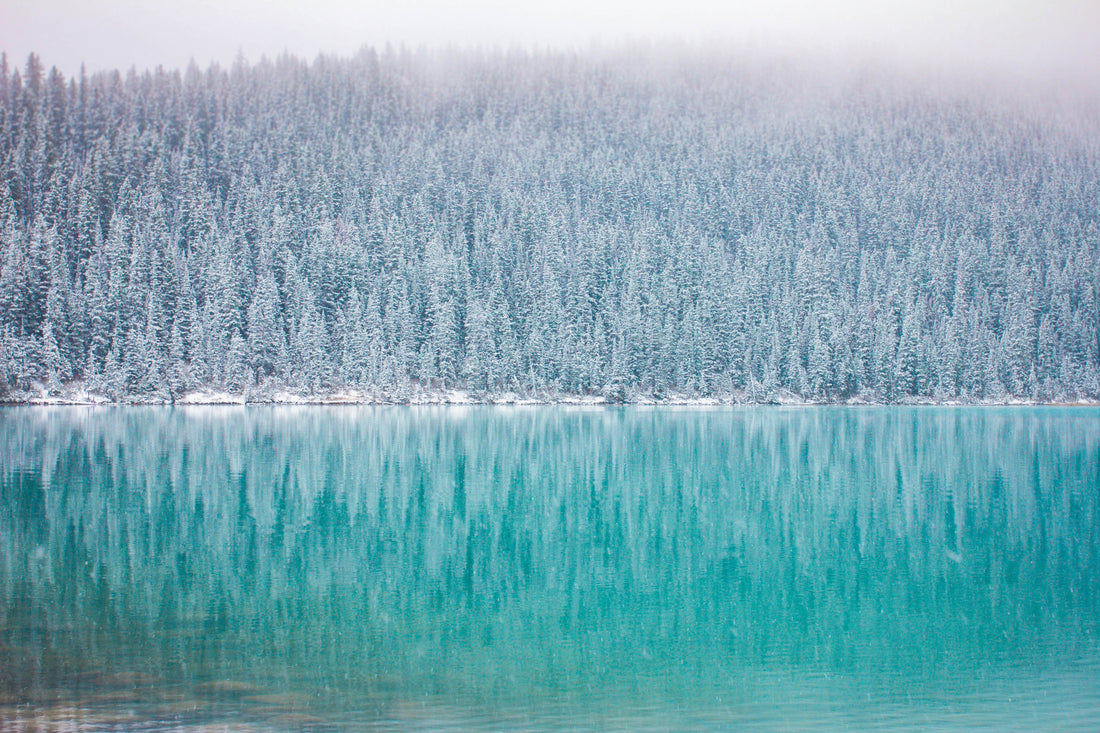
Winter in the Forest
SHOO-FOO TeamShare
Christmas and the holiday season are behind us, but we are still in the middle of winter. Many of us focus on staying warm and relaxing. While for others it means rushing south for beach sand between their toes or heading up the mountain for fun on skis.
Have you ever wondered how is life in forest during the winter?
The leaves have fallen, the trees at their best.
The snow falls softly, a blanket of white.
A peaceful hush, a serene sight.
The animals sleep, in dens and in caves
While the wind howls, through the barren trees’ waves
But the forest is alive, with a hidden pulse.
Well, just like many of us, most deciduous forests go into a dormant state during the months of winter. The leaves fall off the trees, and the trees stop growing. This is because the temperatures are too cold, and there is not enough sunlight for photosynthesis to occur.
Evergreen forests such as coniferous forests, are not affected by the winter season in the same way. They keep their leaves, but they may slow down the rate of growth.
In many parts of the world, the winter months also bring snow and ice to the forest. The snow acts as an insulator, helping to keep the ground and the roots of the trees warm. The snow can also help to provide moisture for the trees during the dry winter months.
Life of the animals in forest in Winter
Animals that live in the forest also change their behavior during the winter. Some animals, like bears, hibernate to conserve energy during the cold winter months when food is scarce.
Other animals, like deer, grow thicker coats to keep warm. Raccoons, squirrels, rabbits, foxes and coyotes will also survive the winter by growing thicker fur to stay warm and hunting for food or eating stored food.
Some birds migrate to warmer climates, while others, like the chickadee, can survive the winter in the forest by finding food and shelter. Some species of hawks do not migrate and are able to survive the winter by hunting for food.
Overall, the forest changes during the winter months, but it is still an active and alive ecosystem. The trees rest, and the animals adapt to the changing seasons, but life goes on.
Life of the insects in forest in Winter
Many insects living in forests are not active during the winter months. The cold temperatures and lack of food sources can make it difficult for them to survive. However, there are some insects that are able to survive the winter through a variety of strategies.
For example, the ladybugs will hibernate during the winter. They will find shelter in leaf litter, logs, or other protected areas and enter a state of torpor, a type of hibernation where the metabolism slows down, until the warmer weather returns.
Certain species of moths, butterflies, and beetles, will lay eggs that will overwinter, meaning they will survive the winter as eggs and will hatch in the spring when the weather is warmer.
Few species of ants, termites, and springtails are active throughout the winter. They are able to survive the cold temperatures by staying underground or in the insulating leaf litter. They feed on the decomposing organic matter in the forest floor.
Overall, most insects living in forests are not active during the winter months, but some are able to survive through hibernation, overwintering, or by staying active in protected areas.
Human life in forest during the Winter
There are some human populations that live in forests and continue to do so during the winter months.
Indigenous people have lived in forests for thousands of years, and many still do today. These communities have developed a deep understanding of the forest ecosystem and have developed strategies for survival during the winter. For example, they may use traditional hunting and gathering techniques to obtain food and use natural materials to build shelters that provide insulation against the cold.
Similarly, there are other communities of people who live in forests for different reasons. For example, some people live in forested areas as part of a subsistence lifestyle, hunting and gathering food, and using natural materials for shelter and warmth. Other people may live in forested areas as part of a sustainable living, eco-village or off-grid living movements.
The joy of Winter sports in Forest
Forests are also a great place to enjoy winter sports, as they often have ample snow and a variety of terrain. Some popular winter sports enjoyed by many winter lovers include:
- Skiing and Snowboarding: Many forests have groomed ski and snowboarding trails, as well as backcountry areas for more experienced skiers and snowboarders.
- Snowshoeing is another great way to explore the forest in the winter. It allows you to walk on top of the snow, and it's a low-impact activity.
- Cross-country skiing is a great way to explore the forest and get some exercise. It can be done on groomed trails or in the backcountry, depending on your skill level.
- Snowmobiling is a popular activity in many forested areas. It allows you to explore the forest and backcountry at a faster pace.
- For the more adventurous, winter camping in the forest can be a unique and rewarding experience. It requires proper gear and skills, but it allows you to spend a night or more in the forest during the winter months.
So, let us embrace the winter's kiss. For in this season, there is still bliss!

